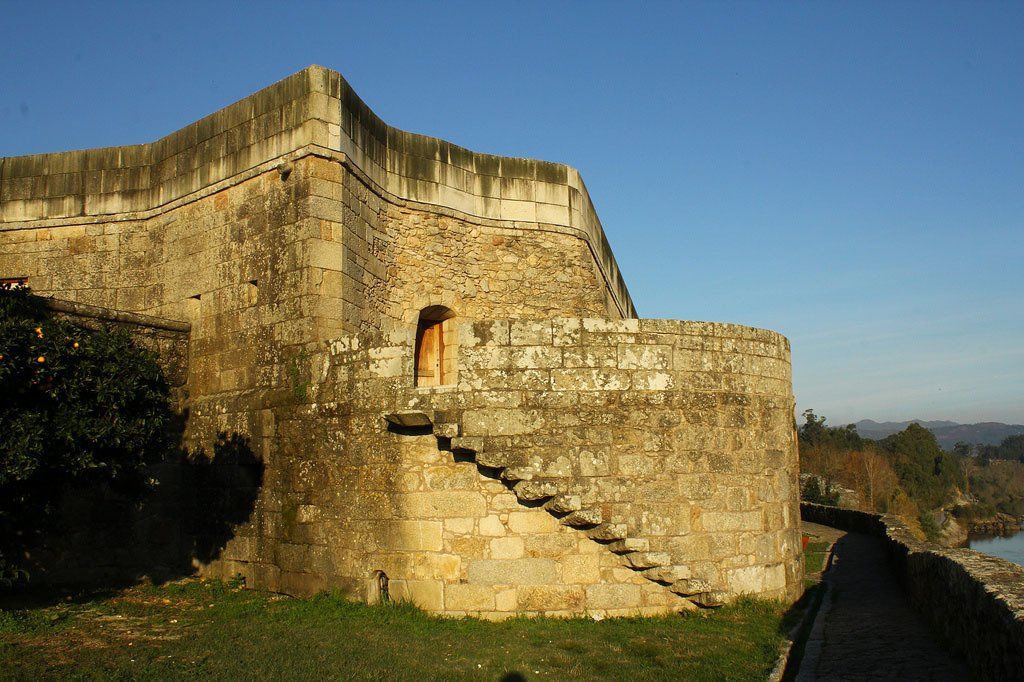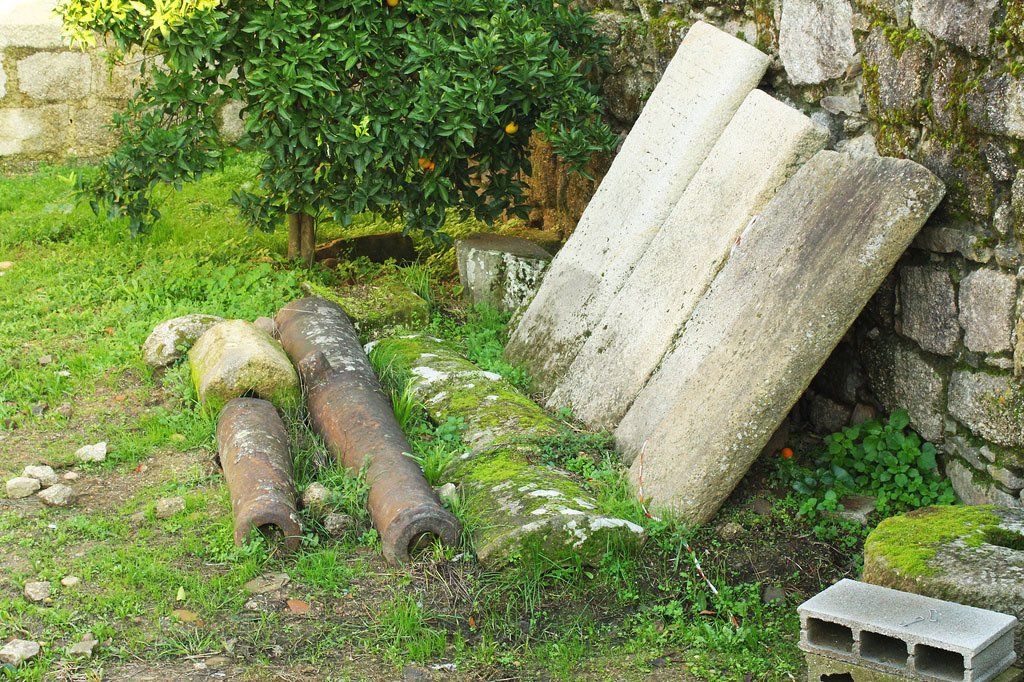17th century walled enclosure
At the junction of the Miño and Tea valleys is this magnificent fortress that is today one of the symbols of the Salvaterra town hall and the entire region. Located right in the center of the town, in the Plaza del Castelo, this fortress is located on a strategic promontory on the banks of the River Miño. It is located a few meters from the international bridge that serves as the border between Galicia and Portugal and connects the Galician town of Salvaterra do Miño with the Portuguese Monçao. Its origins date back to the 10th and 11th centuries, in the years 1643-1644 at the foot of the Miño River, in order to protect Salvaterreans from numerous attacks throughout the centuries. After the Portuguese Restoration War, a series of defensive constructions began to be built around the town. Thus, a reconstruction and modernization of the wall is carried out, where the most prominent element is the placement of bastions, in order to eliminate the blind spots of the wall, whose materials are obtained from the buildings destroyed by nearby buzzes. A construction where speed and efficiency prevail in the face of possible mishaps, which led to these walls still standing today. It was the scene of many of the confrontations between Portugal and the Kingdom of Castile. From this castle, Doña Urraca led in 1121, supported by Diego Gelmírez, the attack against her sister Teresa de León, who proclaimed herself queen of Portugal. In 1479 Pedro Madruga defended himself in this castle from the army sent against him by Archbishop Alonso II de Fonseca. The original fortress was built almost a thousand years ago, back in the 10th century or perhaps in the 11th. The wall that surrounds the castle dates from the 12th century and its main purpose was to defend the town from the constant attacks of the then Lusitanian enemies. The complex occupies an area of 9,700 square meters, occupied by the walled enclosure with its sentry boxes, the Casa del Conde, the Pazo de Doña Urraca and the Chapel of the Virgen de la Oliva. The so-called Doña Urraca Caves, with their spiral staircase, are preserved from the 12th century. Within the context of the Portuguese War of Restoration, the castle belonged to Portugal between 1642 and 1659, once its lord, García Sarmiento de Sotomayor, count of Salvatierra, left his Portuguese friend Gregorio Lopes de Subasta as warden of the castle, who He betrayed him by handing over the square to João Rodrigo de Vasconcelos y Sousa, count of Castelo Melhor, who took possession of it after crossing the Miño river on August 15, 1643, not without confrontations with the local people. In Portuguese hands, the castle's defenses are improved, building new walls and reinforcing the bastions, making it an almost impregnable fortress. The Spanish troops, to try to recover Salvatierra, must encircle the fortress, for which they must seize the Monçao fortress, on the Portuguese side, so that they can cut the enemy's rear and isolate it. To prepare for the assault on Monçao, the Spanish built the fortifications of the Fort of Santiago de Aitona, the Fillaboa Fortress, and the Watchtower of San Pablo de Porto. The Fillaboa Fortress, still under construction, was razed by 2,000 infantry and 50 Portuguese knights, being immediately rebuilt by the Spanish. The Watchtower of San Pablo, a few months after being completed, was also attacked and destroyed by the Portuguese, to be rebuilt by the Spanish. Despite the numerous Portuguese skirmishes, these land fortifications fulfill their function in the assault on Monçao, which falls on February 7, 1659 before the Spanish attack supported by the artillery of the Fort of Santiago de Aitona. With Monçao in Spanish hands the Portuguese troops are surrounded in Salvatierra, reason why they will capitulate ten days later. After the Spanish victory, the auxiliary fortifications became a danger, since they could serve as a Portuguese counter-offensive, for this reason the Xunta de Guerra, on May 29, 1659, demolished the Fort of Santiago de Aitona and the Fillaboa Fortress. , leaving only Atalaia de Sano Pablo de Puerto standing. The wall is preserved in perfect condition thanks to the recent restoration (2008) by the city council. Valle is worth going around the walls and observing the beautiful views of the Miño River on its border with Portugal that can be seen from the fortress. The history of this castle is linked to the great names in the history of Galicia such as the nominated Doña @Urraca in her fight against Teresa of Portugal or Pedro Madruga himself, the protagonist of the violent confrontations between the feudal lords of Soutomaior and the Sarmiento. The Salvaterra castle and its historical surroundings were declared of Cultural Interest in 1949.






















